It's all about saving the butterflies and the bees lately. With good reason. Without them we're pretty much screwed. Although I'd like to take a moment to give the flies a round of applause for their outstanding and undervalued work as pollinators.
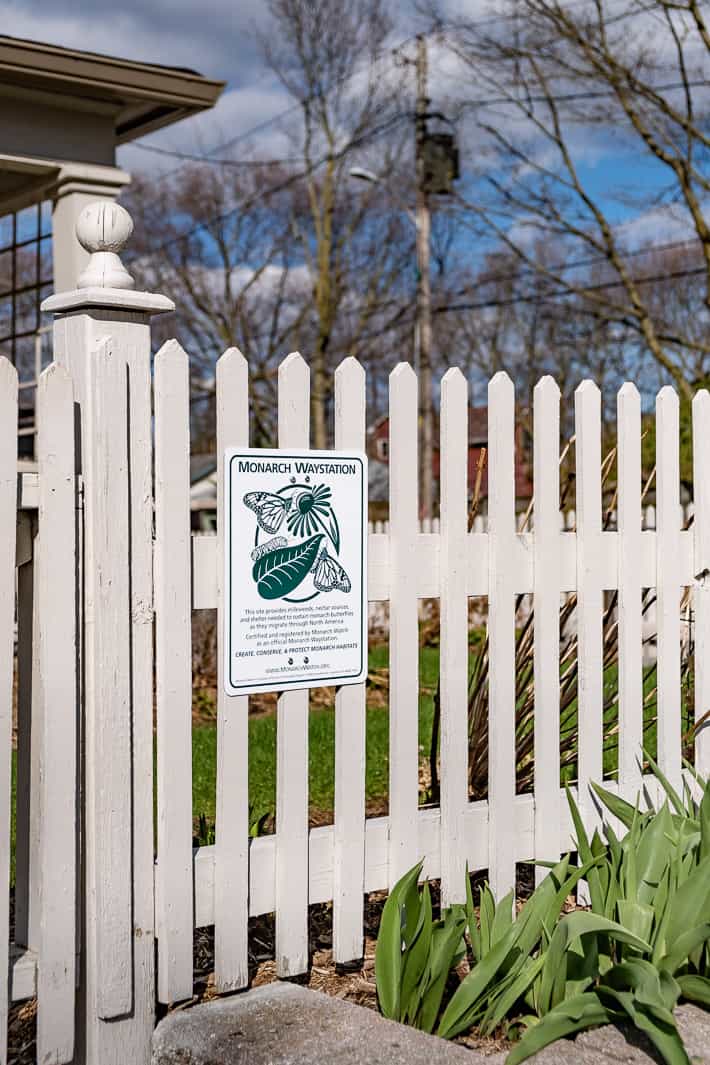
Flies, as it happens, are the 2nd most important pollinator in the world that everybody hates. It comes down to basic manners and marketing. The bees have it all. Fantastic manners and smarts.
Yes bees sting, but not really very often. It's just exactly enough to make all of us terrified to invade their personal space.
Flies on the other hand are maggots that grew wings.
Therefore, bees we give a respectful bubble and flies we flick, smash and swat.
If you've been following me for any length of time you know two things about me. I like any food made out of a potato and I raise monarch butterflies in the summer.
I've been raising monarchs for around 20 years and to my credit haven't once tried to feed them a potato. The ONLY reason for that is because Monarch caterpillars only eat one thing every single day of their life; milkweed. It's their only food source. Period.
If you want to help monarch butterflies but don't know what to do I've divided the tasks up. Pick the one that suits you.
Table of Contents
1. Food Friend
Don't pull out the milkweed. If you have milkweed and hate milkweed I understand and you are exempt except for one milkweed stalk. You have to leave one.
When people go around pulling out milkweed from their lawns and gardens because it's invasive or ugly or whatever - they're pulling out the only plant in the world that a Monarch butterfly needs for survival. No milkweed? No Monarchs. It's as simple as that.
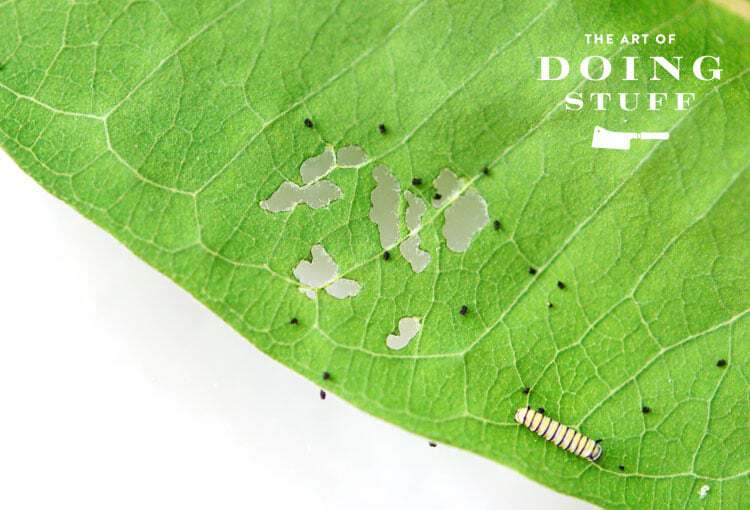
That's why when a little patch of milkweed showed up on my front lawn 20 years ago I left it there. The first year I saw only one Monarch butterfly head towards it the entire summer. It laid its eggs and I was stunned. A day later when I went to check on the eggs they were gone. Eaten by another bug or bird or perhaps a sandal wearing hippie strolling past looking for a healthful snack.
Regardless, the eggs were gone and I was angry. That fall I did a lot of reading up on Monarchs and their steady decline to near extinction. By the next summer I was prepared and began raising Monarchs inside my house by protecting their eggs and caterpillars.
If you haven't read my series on raising Monarchs it's FASCINATING in a Steven King meets Mother Nature kind of way. You can read the first post on raising Monarchs here.
2. Pollination Philanthropation
Plant some flowers just for the monarchs. Don't forget you can plant any of these flowers in pots. In fact ...
I'm giving away Sarah Raven's A Year Full of Pots next week courtesy of the book publisher.
I just got the book myself and there are a ton of potted flower ideas.
Would you like to save this stuff?
For the Monarchs some good choices are:
- Zinnia
- Verbena
- Asters
- Cosmos
- Marigolds
3. Butterfly Benefactor
Make your yard an official monarch waystation.
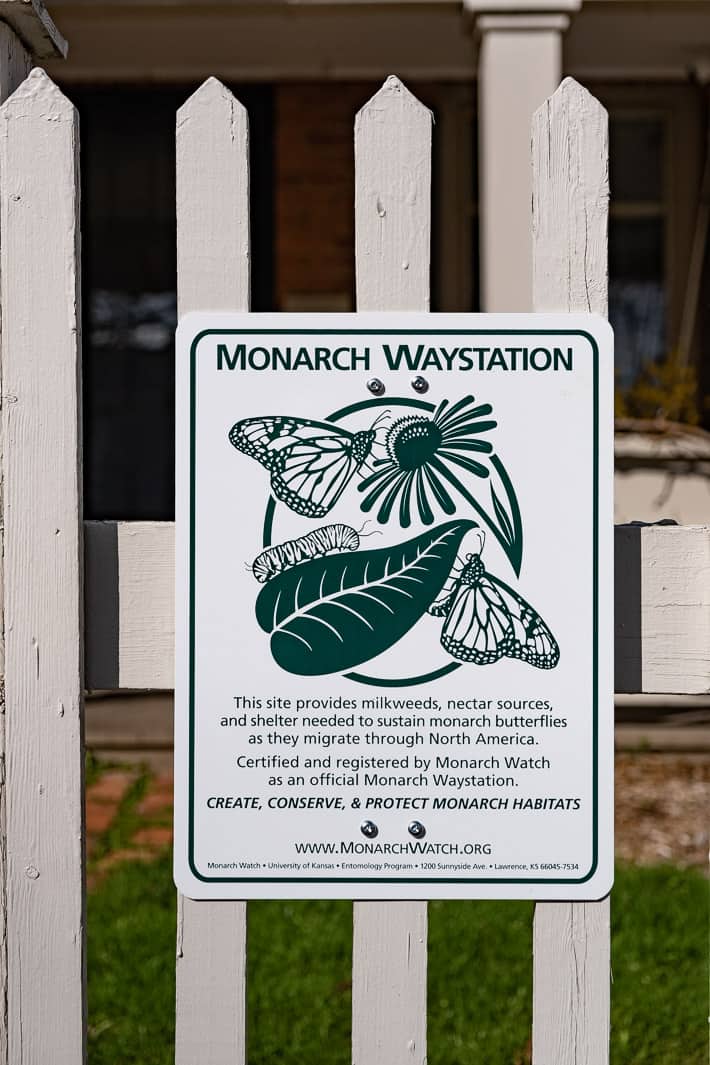
Monarch Watch is a non profit program that started at the University of Kansas in 1992. Its sole reason for being is to research monarchs, promote their protection across North America and educate people about it all.
If you're worried that milkweed won't fit into your neighbourhood's clipped lawn and trimmed boxwood aesthetic, you can order one of their signs for $17 U.S. The sign pretty much says you're basically saving the world from impending doom one fluttering bug at a time.
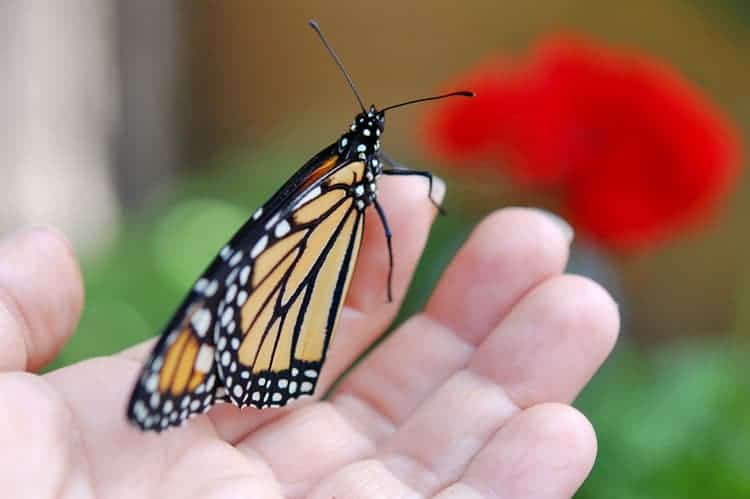
Monarchs have 4 generations each year. The first 3 generations are short-lived, only lasting 2-6 weeks in this world. They spend that time hanging out, eating nectar, being fabulous and laying eggs. But the last generation? The 4th generation of Monarchs? They're the special ones. These 4th generation Monarchs are the ones that guarantee the survival of the species - the migrators. They are born with a very specific job; to live over 6 times as long as their predecessors so they can fly almost 5,000 kilometres (3,000 miles) to to warm land of Mexico so their journey can begin all over again. Like salmon swimming upstream to spawn before they die.
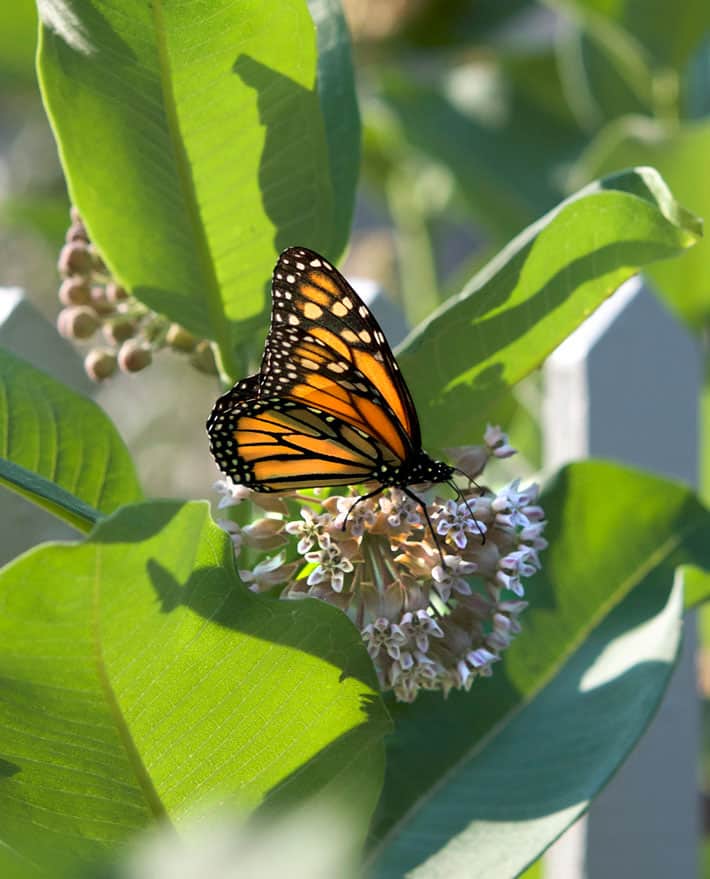
Another part of the Monarch Watch program is tagging the Monarchs you raise. Monarch Watch will mail you butterfly tags (which are little stickers you attach to your newly raised Monarch.) The tags only go on the migration Monarchs and allow Monarch Watch to keep track of the migration patterns and population of the Monarchs.

If you're interested, you can get all the information you need about ordering a sign or tags from The Monarch Watch site.
4. Instar Investor
If you really want to help you can do what I've been doing for years. It takes more time than planting flowers or leaving one milkweed stalk but it's a lot more fascinating.
You can learn to find and harvest monarch eggs and raise then raise them yourself to make sure they make it to adulthood. Then you release them.
You get to see up close every different phase of the development. All 5 instars, the chrysalis with its gold beads, and the crumpled pile of black and orange that opens up into a monarch butterfly.
I used to raise my monarchs indoors, then I started raising them outdoors in this monarch house I made. I've found the monarchs I raised indoors had less disease and a lower mortality rate so I'm going back to that method this year.
Conclusion
To help the pollinators: you can plant some flowers & watch the monarchs or you can leave rotting food on your lawn and wait for the flies. Your choice.
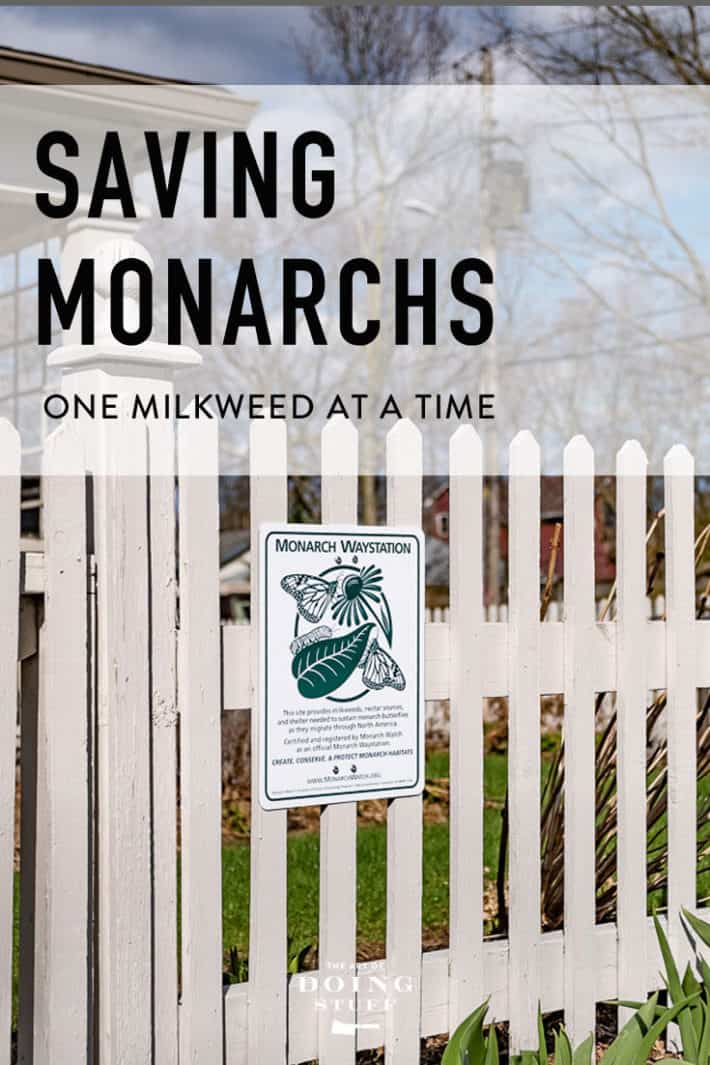

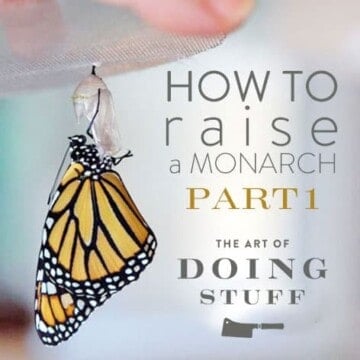
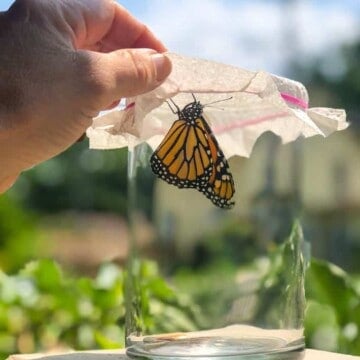
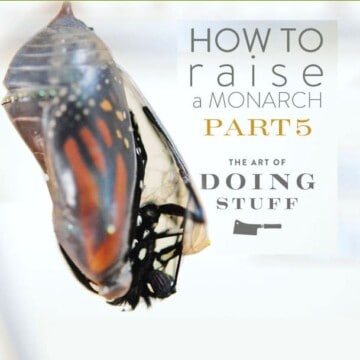
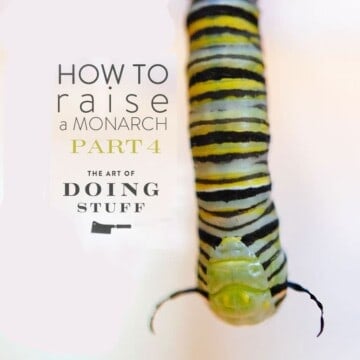
Patti D
I started raising monarchs when my kids were little. My kids have flown but I'm still doing it and guard my milkweed patch zealously. Watching the monarch lifecycle process never gets old!
Karen
They go through a LOT of milkweed don't they?! ~ karen
Hettie
We look after Monarchs too, Karen. We started years ago when our kids were small. There's nothing like watching them hatch, stretch, and take to the sky. I also plant fennel and dill for Swallowtail butterflies. The first time I saw their caterpillars on my fennel fronds I thought they were hornworms. They look similar when you're a newbie gardener. Here's a link for anyone interested:
https://entnemdept.ufl.edu/creatures/bfly/bfly2/eastern_black_swallowtail.htm
Karen
I find them on my parsley and dill all the time too! ~ karen
Betsy
Good for you! Monarchs are such beautiful insects - like the poster child for bugs!
Regarding the list of flowers for monarchs (and other pollinators, too), I recently ran across mention of a study where they looked at the pollen and nectar produced by different flowers. I stumbled on it when I came across several websites saying pollinators don't really like French, African or Signet marigolds. I have loved these flowers for years. Part of the problem is that people don't know to look for single or at most semi-double blooms with ANY kind of flower. That makes it easier for the butterfly, bee or other pollinator to reach the pollen and nectar. But part is that the marigolds just don't come across the way Bacherlor's Buttons (cornflowers), Cosmos, and even ragweed do! To see the study, look for "Food for Pollinators" in PLOS-one (https://doi.org/10.1371/journal.pone.0158117). It's not comprehensive, but it was eye opening for me.
Susan Schlub
OOOKKKAAAYY. So you have given a reason for a flies existence. Now, I'll be waiting to see if you come up with anything good about TICKS. :) :)
Karen
nope. NEVER.🤢 ~ karen!
Franklin Hunting
If flies are such great pollinators, why do they try to pollinate my glass of water? :-)
Krystal
My little children and I adore seeing the monarchs come through our garden each yr, and we have caught admiral butterfly caterpillars to raise and release (so magical!), but I don't think we have any milkweed. We threw some seeds in the garden a few years ago but never saw them come up. Would love to try again.
Do you know if it's somehow still possible to sow native milkweed seeds nowish, and have them germinate and grow this yr, if I'm already past last frost (pine woods of east TX, zone 8)? We've still got lots of rain and beautiful green things sprouting up everywhere this Spring...
But growing guides say to sow milkweed seeds several weeks before last frost. Do you know if there's some clever way around this, like giving the seeds a few cold weeks in the fridge, as simulation or something? I'd love to help raise more baby Monarchs here, and give them more local milkweed. Thanks much!
Debbie
Krystal, check with your local Master Gardeners to see if it is too late for seeds. You can order native (make sure it is native!) milkweed from several nurseries on-line and start from there. I would recommend six plants so the Monarchs (if/when they find your yard), don't nibble it down to a stub and you should have plenty of food for them. You can always find out more info from the Xerces society on gardens for Monarchs and other pollinators. https://www.xerces.org/ BTW, I am a Master Gardener, but not in your area which is why I suggesed contacting your local one. They know your planting times, etc., better than I. They can be found at your University Extension Program. They also usually have a hotline you can call or email.
Karen
Hi Krystal! They really are amazing to watch. As far as milkweed goes, you can't really speed up seeds. They're bossy that way. But you can find milkweed plants at nurseries and garden centres usually. ~ karen!
Robin Prothro
I'd like to start this project. So, it's not easy to damage their wings when applying the tag? I'd be so nervous.
Karen
Hi Robin! I never ended up tagging any of my Monarchs so I can't say for sure, but the stickers are made for applying to monarchs. ~ karen!
Sandra D
As far as I know, monarchs aren't in Alberta (Calgary) - is that true? I do have some milkweed seeds so I could give it a try. I don't think it'd be too late to try to sow them.
Paula Beattie
Wonderful! I have the same sign and do the same thing!
Mary W
Is there some way to tell which butterfly is the 4th generation? Are 4th generation only up north (after migration)? Are there any in Florida - haven't seen one in several years and before that sparse and before that I was young and hadn't yet seen Barbra Streisand sing. We had multitudes in Wisconsin on their way to visit you. Once they landed on our open but screened door. They were thick as thieves on that chosen resting place - almost layered like in Mexico where they layer on trees during the winter. If you haven't ever taken a trip and gone up the mountain to see the sight - it should be on your bucket list. I miss them so, planted a wild milkweed but never noticed any - so sad.
Karen
HI Mary! The 4th generation is just a matter of timing. If they're born late and at the right time they will be the ones to fly far away. But nature is pretty smart so there may be a defining characteristic on them, I'm not sure. ~ karen!
Ann
We don't have a huge monarch population where I live, south central Tennessee. But I have planted 3 types of milkweed on my property and grow all kinds of flowers to attract them in.
But I tell my monarch story often because it still brings me great joy.
In 1996 there was an amazing monarch migration that came thru SW Oklahoma. It started as early as September and continued on thru late October. It even made the local news a few times that year.
Often, I would get up early in the morning, just as the sun was starting to rise and I would go out in to my garden and there would be hundreds of monarchs just flitting around. One particular morning I was out and it was all quiet and I was just standing there enjoying the magic. When all of a sudden I heard the 2 young girls who lived next door, out in their backyard. They were still in their little white lacy nightgowns, with bare feet, but dancing around like little ballet dancers while saying that they were dancing with the butterflies. I just kept quiet and watched as they felt the pure joy of a once in a lifetime event.
I also was able to take a once in a life time photo that year of a monarch on the flower cluster of ageratum, back lit by a just rising sun. I had a much better camera at that time, and a lot more patience than I have now. Of course, this was 4 laptops ago, and pre-cloud, so the photo is now lost to me.
Karen
That's a good monarch story. I'd tell it a lot too. Every time I read about someone waking up and being in their garden by dawn I think - that'd be so great - but I don't have it in me. I am not a get up with the sun person no matter how hard I try. ~ karen!
Diane V.
Karen, thanks for your in depth photi coverage of how to raise Monachs Parts 1 thru V. In one of your posts you advise to remove stalks that may have been exposed to BTK. Do you just pull out or cut off the stalk, or do you have to dig out the root?
Ellen
♥️
Karen
Hi Diane. You just need to pull it out. No digging required. The BTK is just on the surface of the plants stem and leaves and you want to make sure it isn't available for monarchs to land on. If you just pull it, a new stem will usually appear in place of it. ~ karen!
Randy P
Wishing you the best in fostering the new crop of Monarchs. It seems this year here in Illinois we will be enjoying two separate herds of cicadas numbering in the metric gazillions according to the 'bug people'. Slightly creepy and definitely deafening. Not unlike rap music.
Karen
I've heard about the double herd of cicadas. I wonder if they're here too? ~ karen!
Randy P
You may be a bit too far North. I guess i could always box up a few thousand and send them to you? https://globalnews.ca/news/10356293/cicadas-rare-double-brood-event-canada/
Dana Studer
I'm late replying to this so Idk if you will see it.
This is so cool, Karen. I told a friend about it and she said Monarchs raised inside lose their ability to navigate. Is your cabinet on the side of your house not considered inside?
Jen
As kids we would go find the caterpillars . Then every day get them fresh milkweed leaves, always near the train station, where we would walk to meet our Dad. By far one of my favorite memories.
I’ve tried again this year to grow milkweed from seeds. Kept them moist, in the fridge for a month, and I just planted them last week. I’m not feeling confident. Any suggestions? I do my best with flowers for the bees, butterflys and hummingbirds, but I know I need to grow the milkweed for the caterpillars , so any advice would be appreciated.
Thank you
Christina
growing milkweed is not hard. i have had good luck putting the seeds in soil, on top and in milk jugs outside covered until they sprout. i started mine in January or early February this year. They are slow to sprout and grow in the cold spring but they are doing good so far.
Marna
I have always wanted to do this. I love butterflies and I am one of the very few people anywhere in my neighborhood that has flowers. I have some native wildflowers too and actually saw bumble bees and regular bees, which I haven't seen very often. Thanks :)
karen cosme
Hello, everyone.
I live in Massachusetts and we have an invasive weed from Europe - Black swallow-wort - that competes with milkweed for pollination. The flowers look very similar to some milkweeds, but the sap from the leaves is poison and kills Monarch eggs. After pollination (by Monarchs!), the resulting pods release seeds exactly the same way as milkweed. Please do not invite this into your yard...or neighborhood, for that matter, because it is extremely difficult to get rid of.
Please read to familiarize yourself with this plant: Black and pale swallow-worts
Copy and paste if the link does not work: https://www.sleloinvasives.org/about-invasives/target-species/swallow-wort .
Regards,
Karen Jean
Jacquie Gariano
What a wonderful idea. We have some butterfly plants in the yard. I'll have to see if we have any Monarchs and get some milk weed plants,